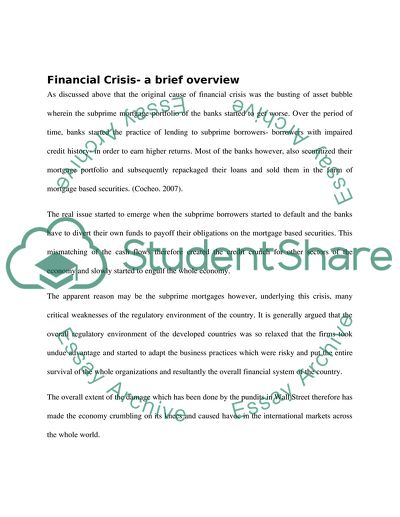Cite this document
(The Current Financial Crisis in the US Case Study, n.d.)
The Current Financial Crisis in the US Case Study. Retrieved from https://studentshare.org/macro-microeconomics/1574160-use-valid-academic-sources-to-illustrate-the-proximate-causes-for-the-massive-downturn-of-the-us-economy-2009
The Current Financial Crisis in the US Case Study. Retrieved from https://studentshare.org/macro-microeconomics/1574160-use-valid-academic-sources-to-illustrate-the-proximate-causes-for-the-massive-downturn-of-the-us-economy-2009
(The Current Financial Crisis in the US Case Study)
The Current Financial Crisis in the US Case Study. https://studentshare.org/macro-microeconomics/1574160-use-valid-academic-sources-to-illustrate-the-proximate-causes-for-the-massive-downturn-of-the-us-economy-2009.
The Current Financial Crisis in the US Case Study. https://studentshare.org/macro-microeconomics/1574160-use-valid-academic-sources-to-illustrate-the-proximate-causes-for-the-massive-downturn-of-the-us-economy-2009.
“The Current Financial Crisis in the US Case Study”. https://studentshare.org/macro-microeconomics/1574160-use-valid-academic-sources-to-illustrate-the-proximate-causes-for-the-massive-downturn-of-the-us-economy-2009.


